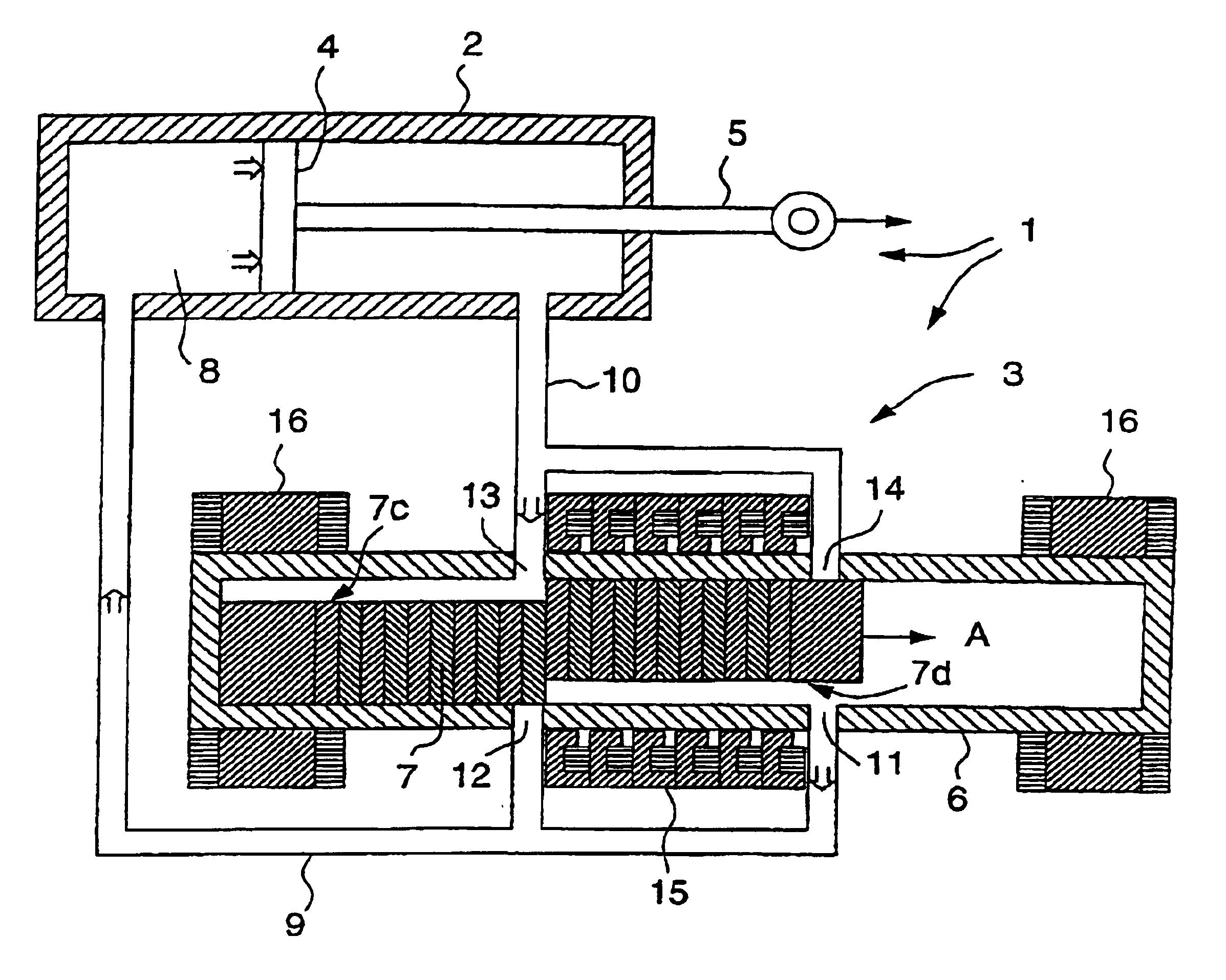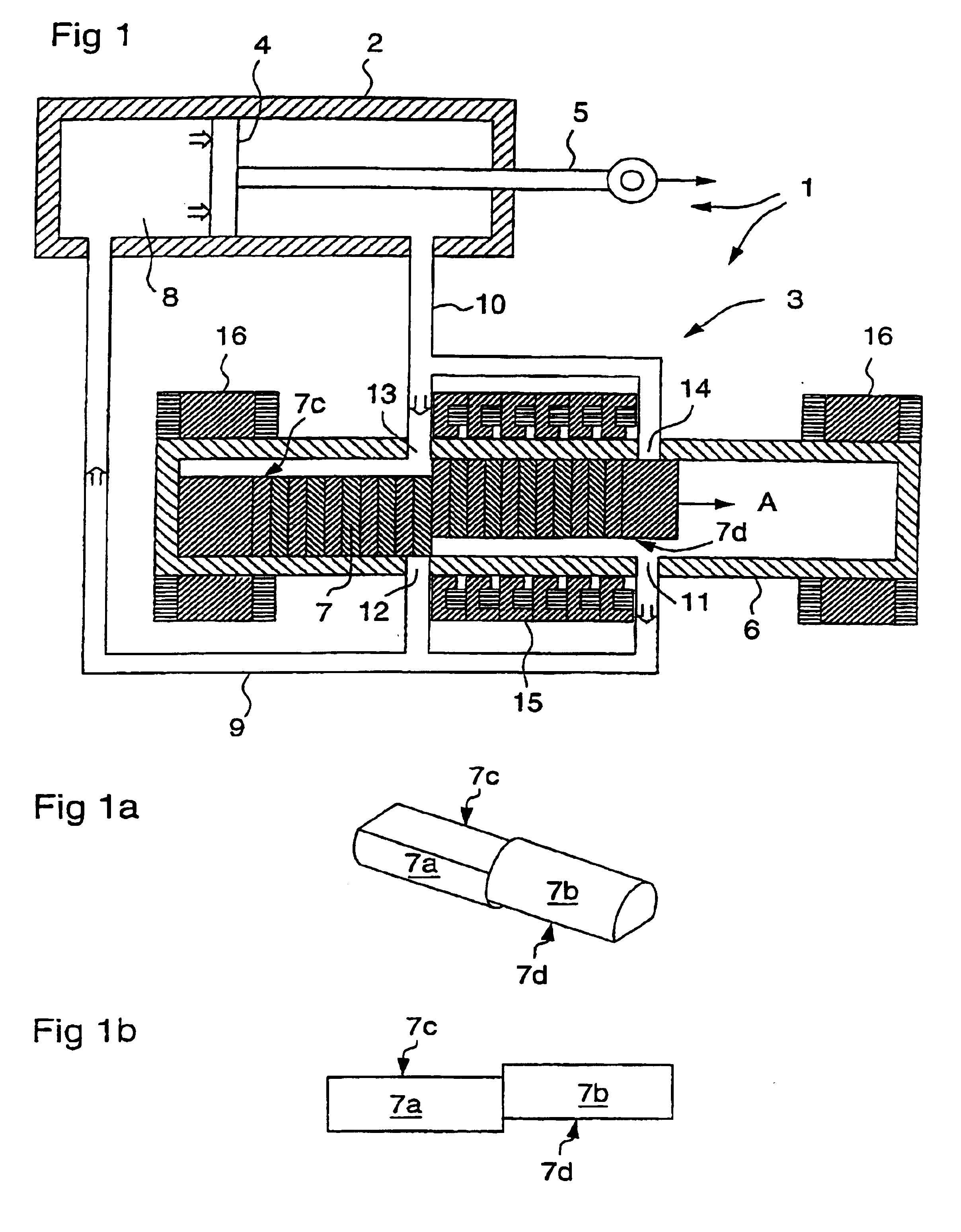Electrohydraulic setting device
a technology of electrohydraulic setting and hydraulic system, which is applied in the direction of rod connection, piston pump, fluid coupling, etc., can solve the problems of increasing the risk of fire, complicated hydraulic system fitting onboard aircraft, and high cost of hydraulic system
- Summary
- Abstract
- Description
- Claims
- Application Information
AI Technical Summary
Benefits of technology
Problems solved by technology
Method used
Image
Examples
Embodiment Construction
In accordance with the invention, an electrohydraulic actuating device is presented, consisting of a hydraulic slave cylinder containing a piston that pushes a piston rod and which receives its pressure for building up this piston-derived power via its integration with a hydraulic pump, which is in turn is driven by a linear electric motor.
The hydraulic pump consists of a pump cylinder in which a piston slides at a specified frequency in a reciprocating motion within the pump cylinder. The piston's motion is controlled through its functioning as the rotor for the linear electronic motor, with the motor's stator coil being wound around the pump cylinder itself. Moreover, the piston functions as a pump piston for pumping hydraulic fluid to the slave cylinder. An additional feature is that the piston also functions as a valve for opening and closing compression and suction ducts for carrying hydraulic fluid to and from the slave cylinder during the piston's reciprocating motion. By pum...
PUM
 Login to View More
Login to View More Abstract
Description
Claims
Application Information
 Login to View More
Login to View More - R&D
- Intellectual Property
- Life Sciences
- Materials
- Tech Scout
- Unparalleled Data Quality
- Higher Quality Content
- 60% Fewer Hallucinations
Browse by: Latest US Patents, China's latest patents, Technical Efficacy Thesaurus, Application Domain, Technology Topic, Popular Technical Reports.
© 2025 PatSnap. All rights reserved.Legal|Privacy policy|Modern Slavery Act Transparency Statement|Sitemap|About US| Contact US: help@patsnap.com



